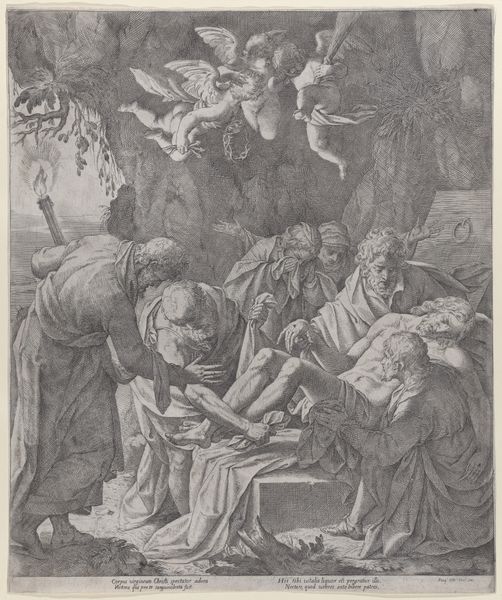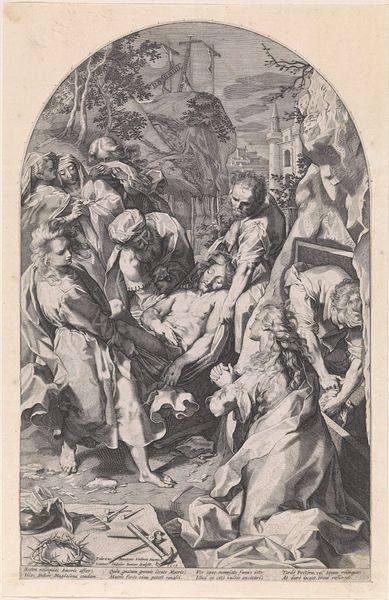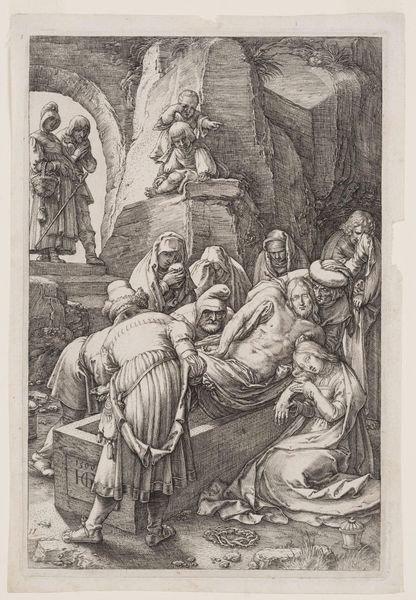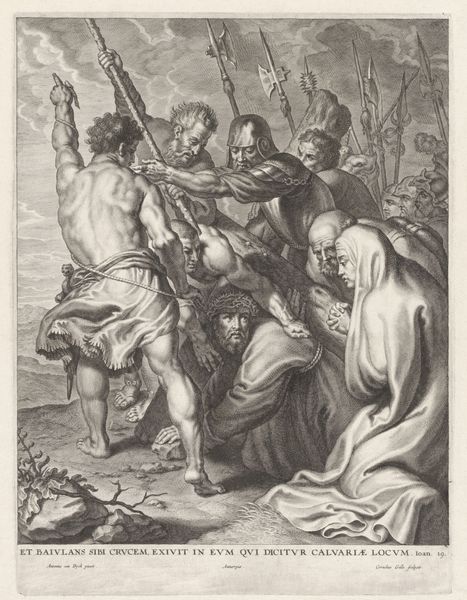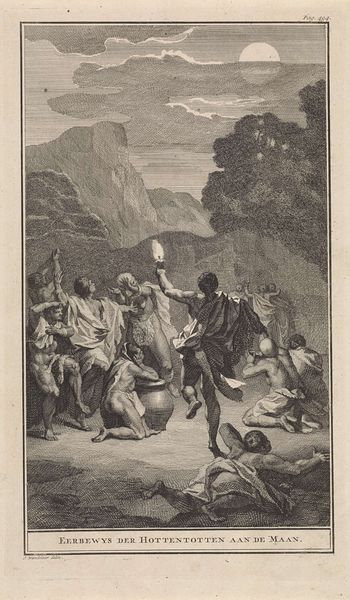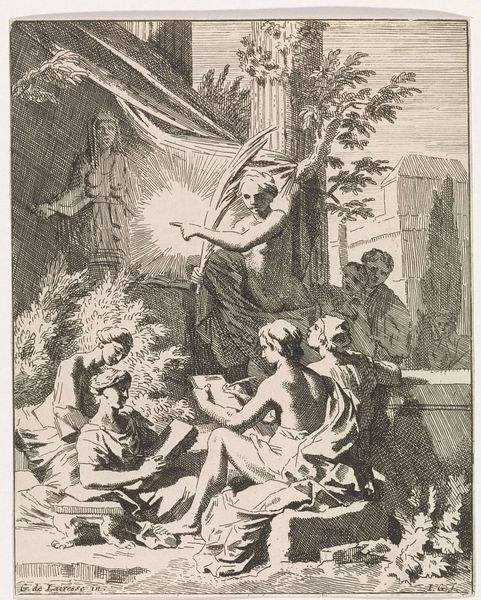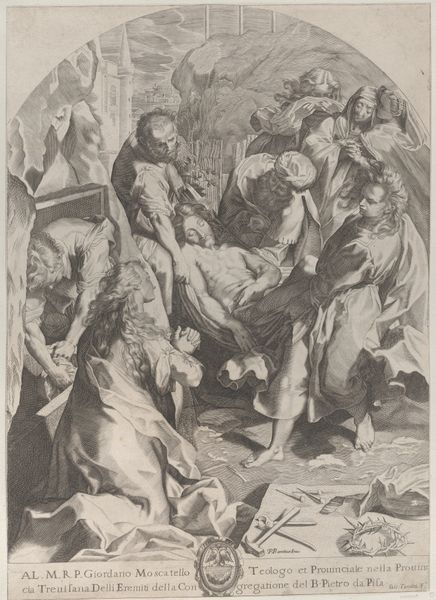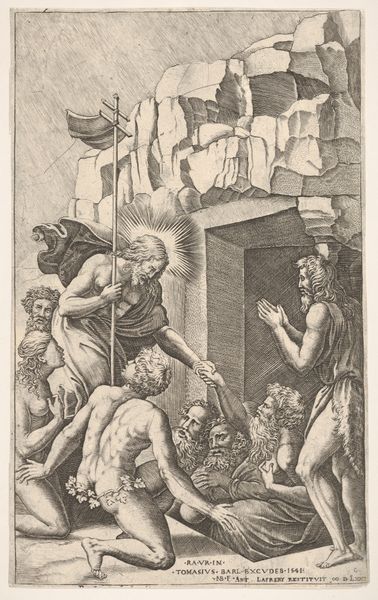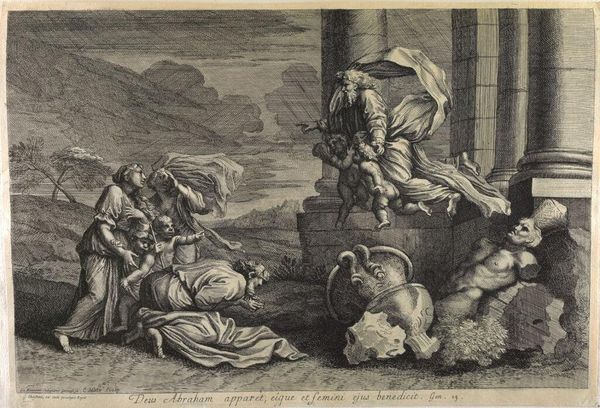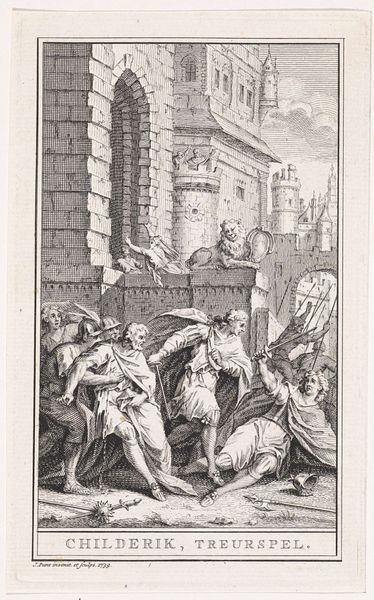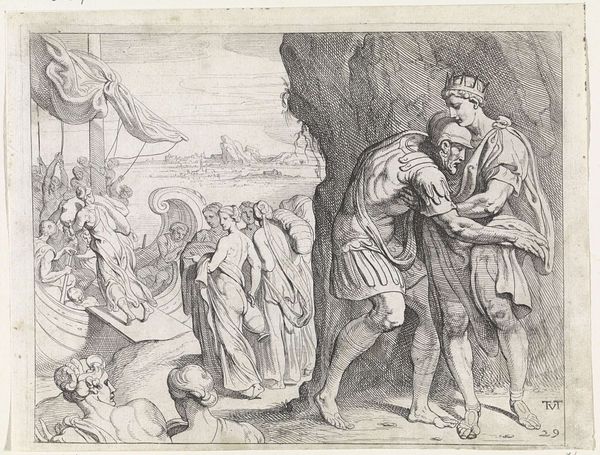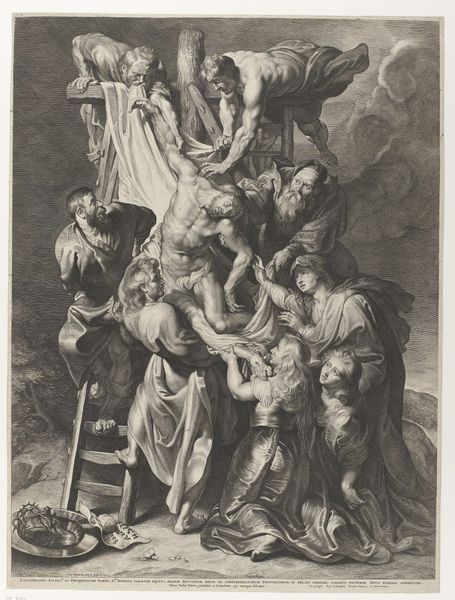
print, engraving
#
ink drawing
#
narrative-art
#
baroque
# print
#
figuration
#
history-painting
#
engraving
Dimensions: width 142 mm, height 175 mm
Copyright: Rijks Museum: Open Domain
Curator: Before us, we see “Cloelia Escaping on a Stolen Horse,” a print by Johannes Glauber, dating somewhere between 1656 and 1726. Editor: The scene feels instantly tense, despite the delicate lines of the engraving. There’s a real sense of urgency in the composition, figures clustered together, all eyes directed outwards, as though fleeing. Curator: The artwork portrays a pivotal moment from Roman history, the story of Cloelia, a Roman maiden held hostage by the Etruscan king Lars Porsena. After a peace treaty, Cloelia and other hostages were allowed to bathe in the Tiber River; however, seizing the opportunity, she escaped on horseback and returned safely to Rome. It's a narrative steeped in themes of courage, freedom, and female agency. Editor: That narrative resonates strongly. Consider the power dynamics at play, a young woman actively disrupting captivity, rewriting the script of her subjugation through direct action and inspiring other captives in her entourage. This wasn't just about personal liberty; it was about defying oppressive patriarchal structures. What did freedom mean within these societal confines? What agency was deemed permissible, and how did she defy this permission structure? Curator: Exactly. What makes this particular rendering compelling is how Glauber highlights Cloelia’s bravery through composition. The light falls on her, atop the horse, making her the clear focal point. Meanwhile, the faces around her suggest surprise and maybe even fear. It's a nuanced depiction, not just of heroism, but of the complicated emotional landscape of resistance. In art of this period, Classical tales like this served as a vehicle for considering contemporary political issues. Editor: Absolutely. Furthermore, we have to acknowledge the horse as a charged symbol. Stealing the means of escape is a radical act of self-empowerment. It suggests a conscious rejection of the prescribed narrative, literally taking the reins. What did the animal itself mean in this period? As a form of technology and conveyance, what statement is being made? It adds a fascinating layer of social commentary to the image. Curator: Agreed. Reflecting on Glauber’s piece, it’s amazing to consider how history, even in the form of a modest engraving, continues to offer potent commentary on freedom, courage, and power. Editor: Absolutely. "Cloelia Escaping on a Stolen Horse" provides not just a window into the past but a mirror reflecting the enduring pursuit of liberty.
Comments
No comments
Be the first to comment and join the conversation on the ultimate creative platform.
